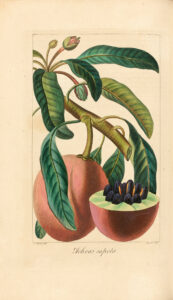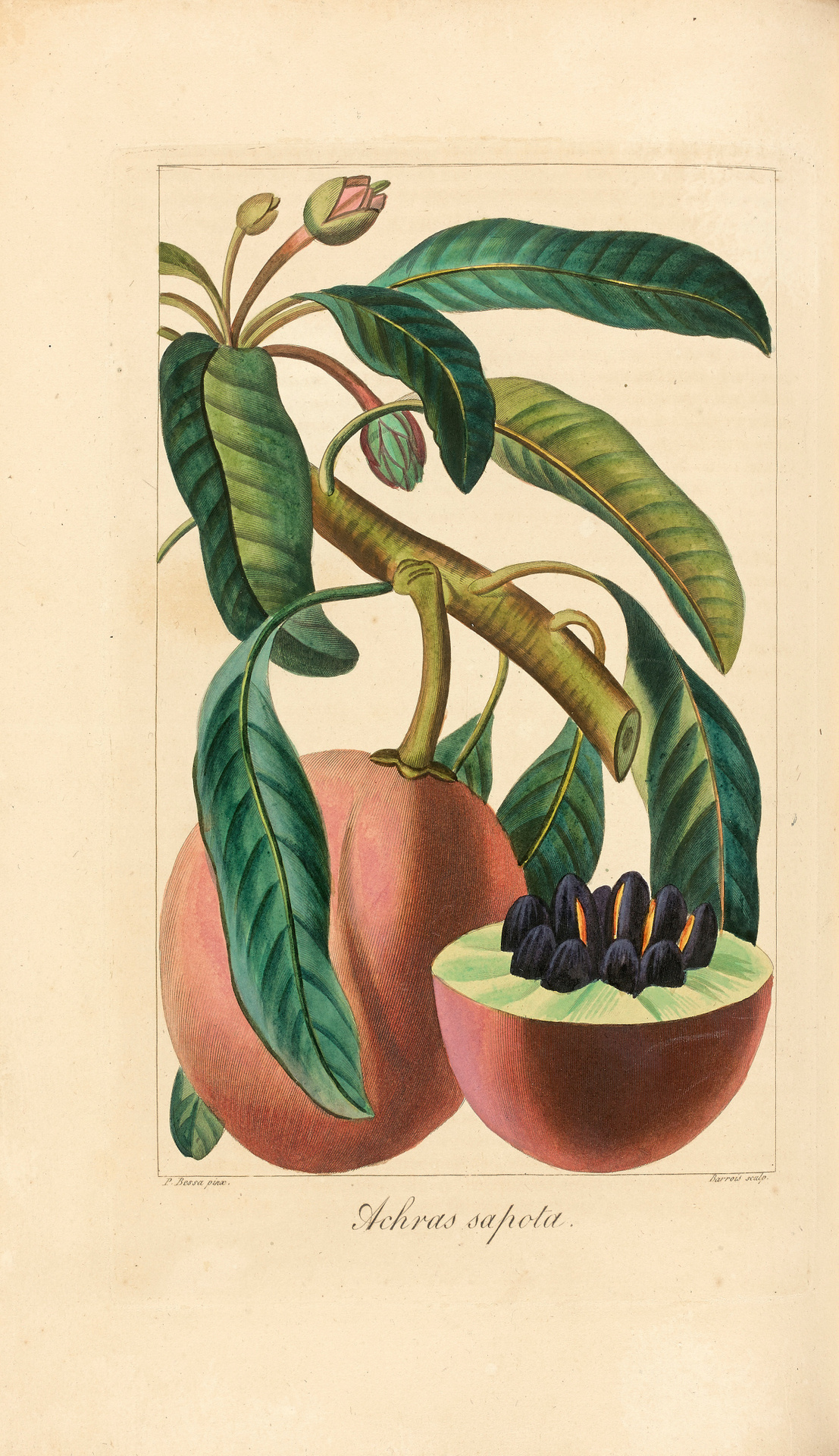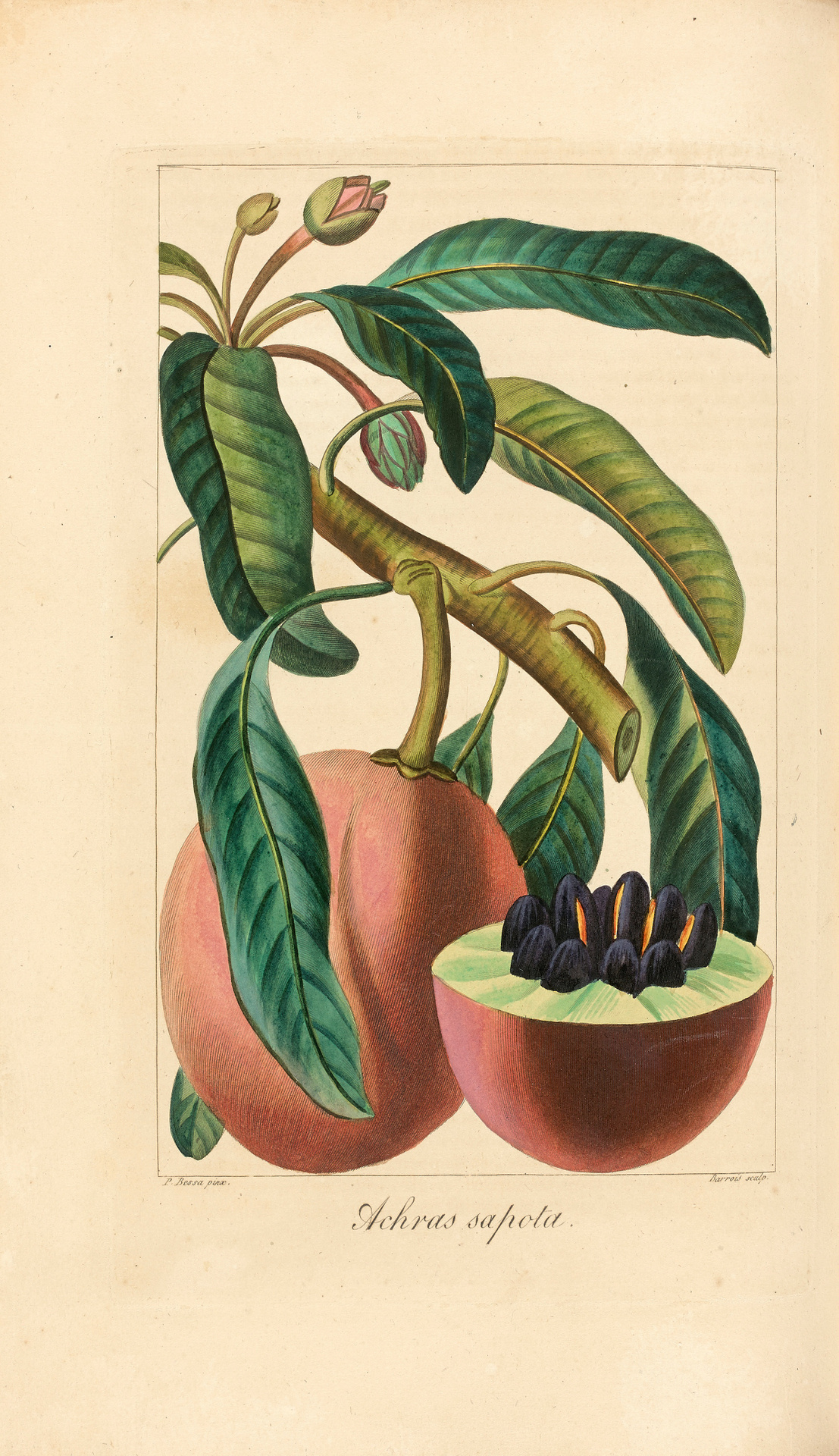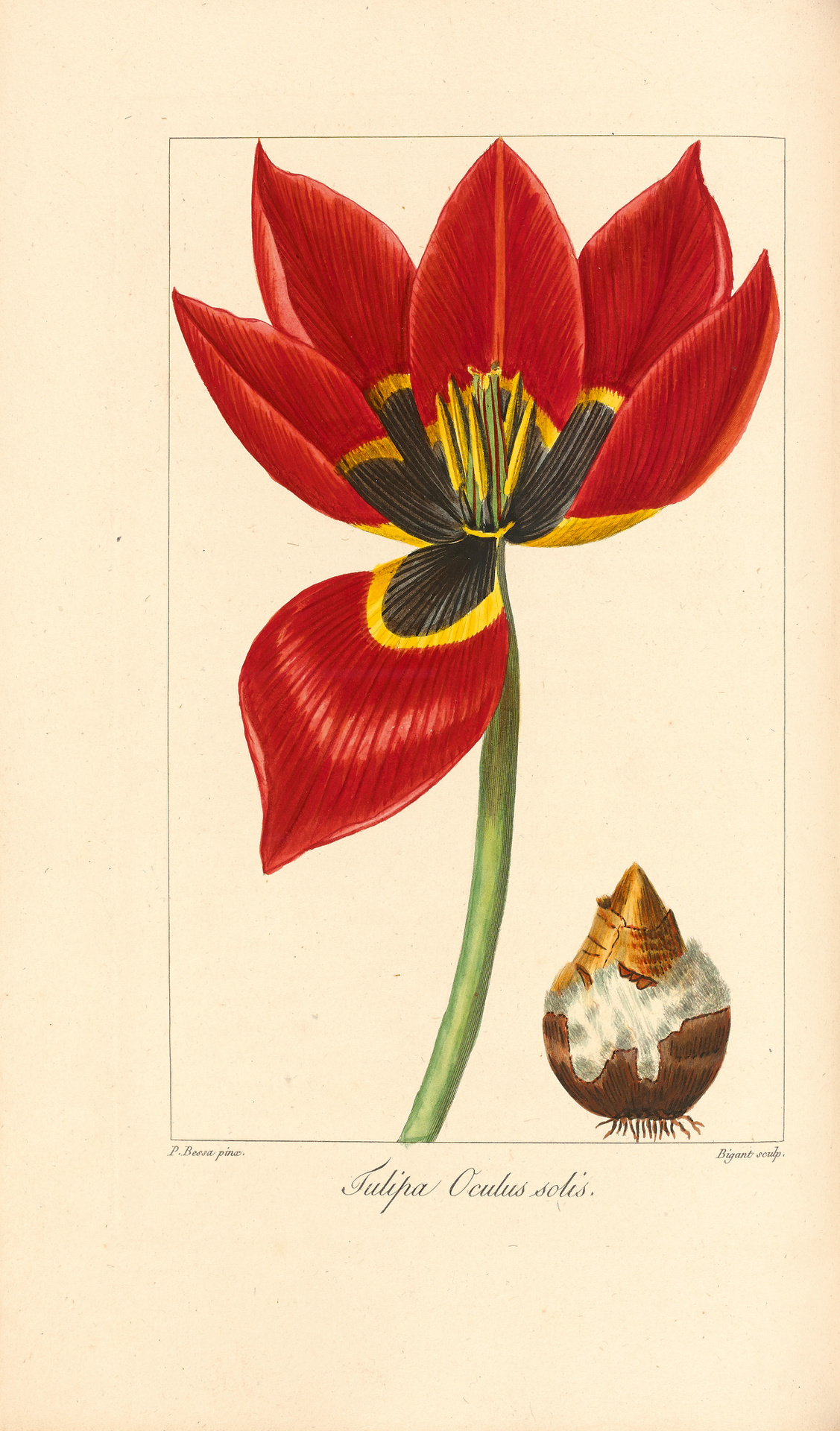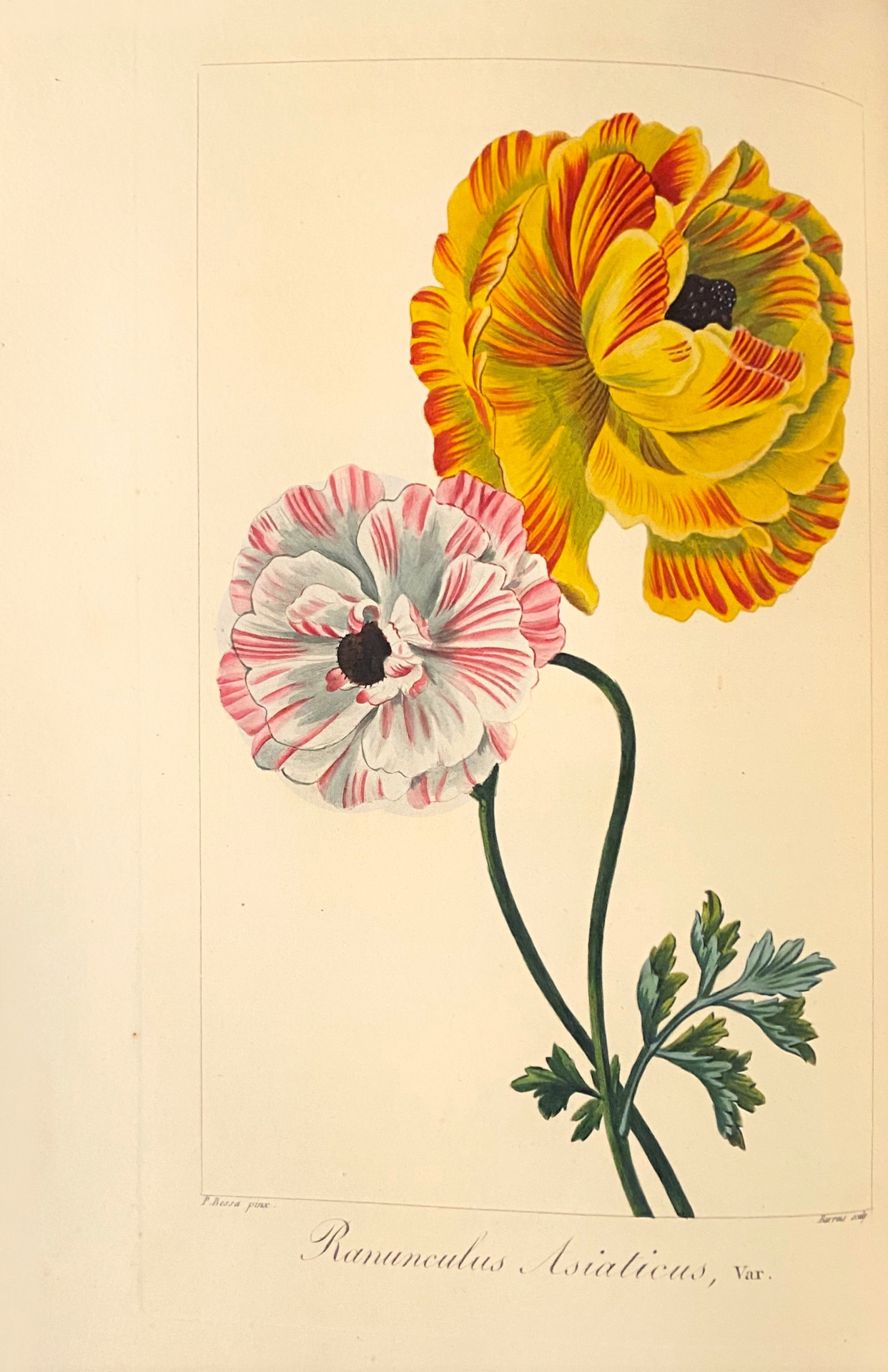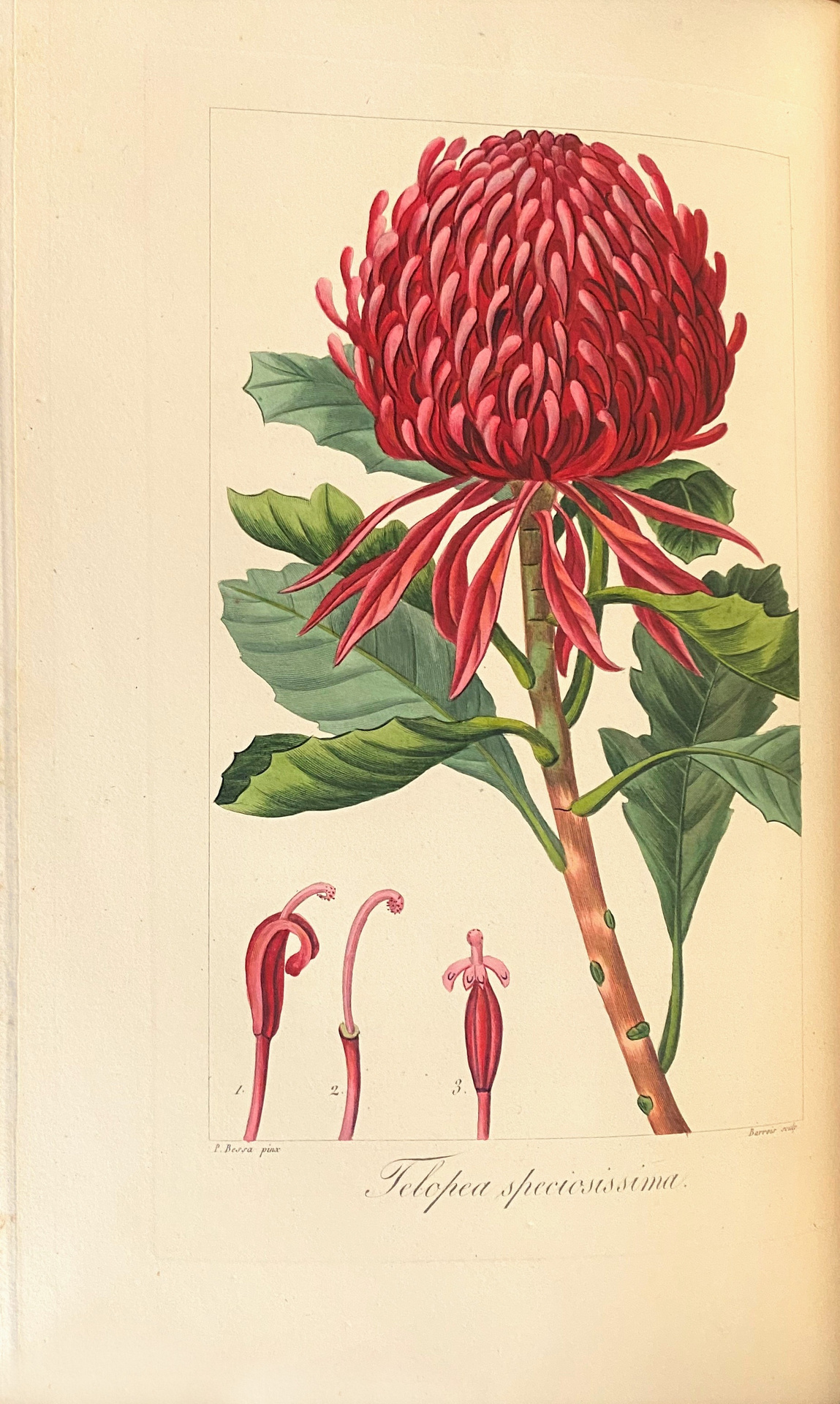Paris, Audot, [1810]-1816-1827
8 volumes large 8vo [273 x 172 mm] of: I/ (3) ll. (half-title, title and dedication), vii pp., plates 1 to 72 accompanied by extensive, descriptive text lêves, (3) ll.; II/ (2) ll., plates 73 to 142 including 3 on double-page, accompanied by descriptive text lêves, (4) ll.; III/ (2) ll., plates 143 to 212 including 3 on double-page and 3 plates bis, with as many descriptive text ll., (2) ll.; IV/ (2) ll., plates 213 to 284 with as many descriptive ll., (4) ll.; V/ (2) ll., plates 285 to 356 with as many descriptive ll., (4) ll.; VI/ (2) ll., plates 357 to 428 with as many descriptive ll., (4) ll.; VII/ (2) ll., plates 429 to 500 with descriptive ll., (4) ll.; VIII/ (2) ll., plates 501 to 572 with descriptive ll., (8) ll., 8 pp. A total of 575 hand-coloured, tissue guarded plates. A few unusual foxing.
Dark blue half-calf, spine half-ribbed and richly decorated, untrimmed. Contemporary binding.
Very rare first edition of the most important French botanical periodic of the first half of the 19th century, superbly illustrated by Bessa, Redouté’s student.
Pritzel, 6418; Nissen, BBI 2323 (574 plates); Stafleu & Cowan, 4952, only quotes 574 pl. and states that pl. 384 was never publ.; J.J. White, in “Delectus Hunteriana” 26; Grêt Flower Books, p. 159.
“The most important French flower periodical of its day” (cfr. White) started by de Launay (1750-1816) and continued after his dêth in 1816 by Deslongchamps (1774-1849).
Loiseleur was a grêt botanist and defended his thesis in medicine in 1805 on Recherches sur l’ancienneté des purgatifs et sur les purgatifs indigènes. Author of the famous Flora Gallica, as well as editor of the Traité des arbres ou Nouvêu Duhamel illustrated by Pierre-Joseph Redouté, he was passionate about phytotherapy.
“The introduction provides a historical and geographical survey of all the most important botanical works published in Europe and maintains that the hand-coloring of the plates in the present work is more accurate than the color-printed plates in contemporaneous French botanical publications. The author further asserts that because the text of ‘Herbier general de l’amateur’ is much more discursive, the work is also superior to such English periodicals as William Curtis’s ‘Magazine; or Flower-Garden Displayed’ and Henry C. Andrews’s ‘Botanist’s Repository, for New, and Rare Plants’.
The superb illustration is composed of 575 plates contemporary engraved and colored after the drawings of Pancrace Bessa (1772-1835), pupil of Van Spaendonck and Redouté, and painter at the Museum National d’Histoire naturelle in Paris.
This copy contains the often lacking plate 384 “Dianthus carophyllus”.
The fine hand-colored coppers were mostly engraved after drawings by Bessa, but there is also one copper after Pierre-Joseph Redouté and one after Pierre-Antoine Poitêu.
Participating engravers were Barrois, Bigan, Brion de la Tour, Callens, Coignet, Susemihl et al.
Painted to be offered to King Charles X, the latter gave in 1826 the original watercolours to his daughter in law, the Duchess of Berry, who in turn offered them to her sister Teresa Cristina of the Two Sicilies, second Empress of Brasilia (1843-1889). Since 1926, they are part of the collection of the Botanic Garden in Rio de Janeiro.
The plants described do not only represent Europên species but also exotic plants of the Americas, as well as rare specimens collected on the famous Pitcairn Island, refuge of the mutineers of Bounty.
“570 colored plates painted by P. Bessa” (Pritzel 5586).
Very bêutiful copy complete with its 575 plates finely contemporary hand-colored, with very wide margins since untrimmed, preserved in its elegant contemporary bindings.
Rare: according to American Book Prices Current, no complete copy of this work has been sold in the last 35 yêrs.
See less information
